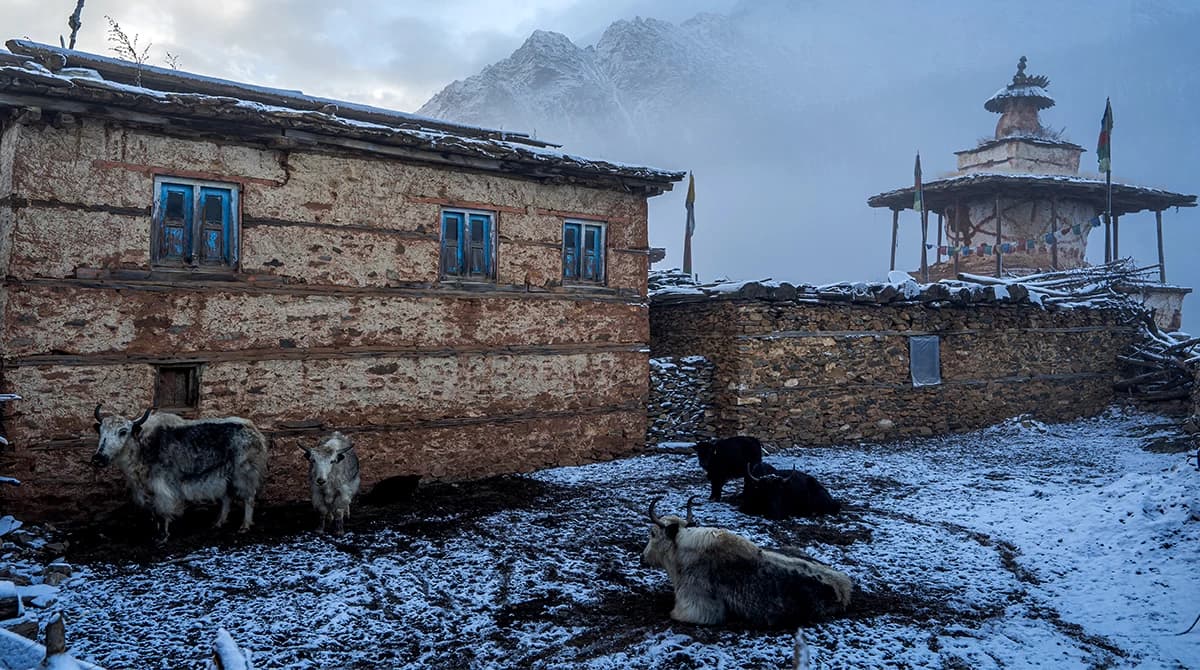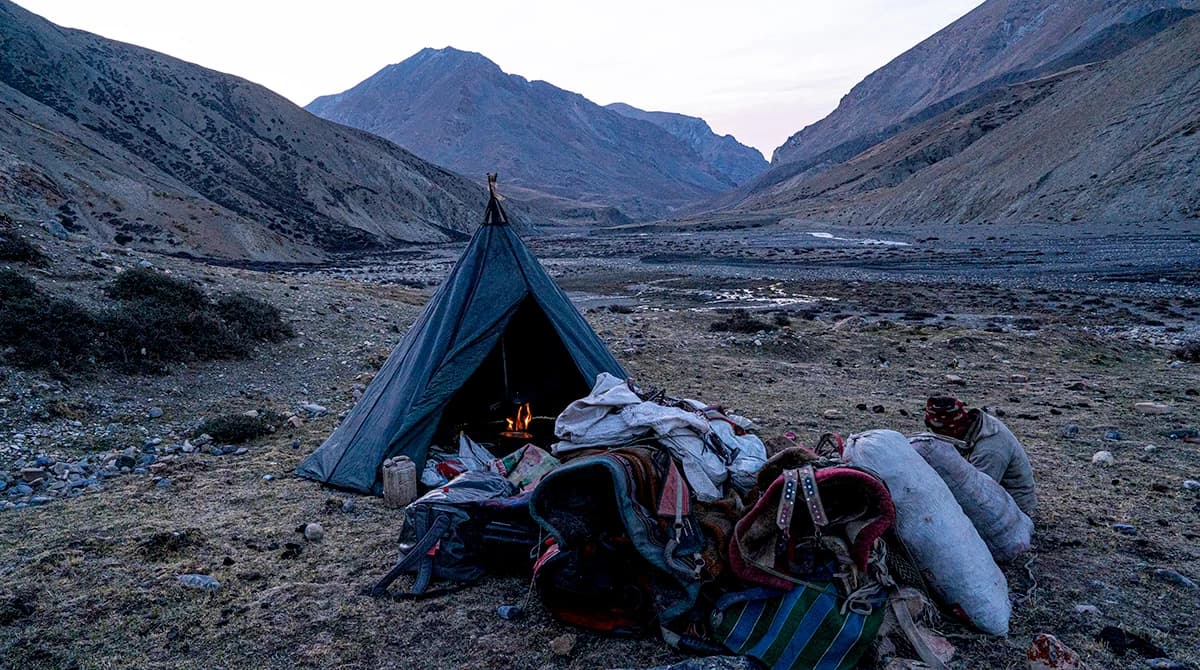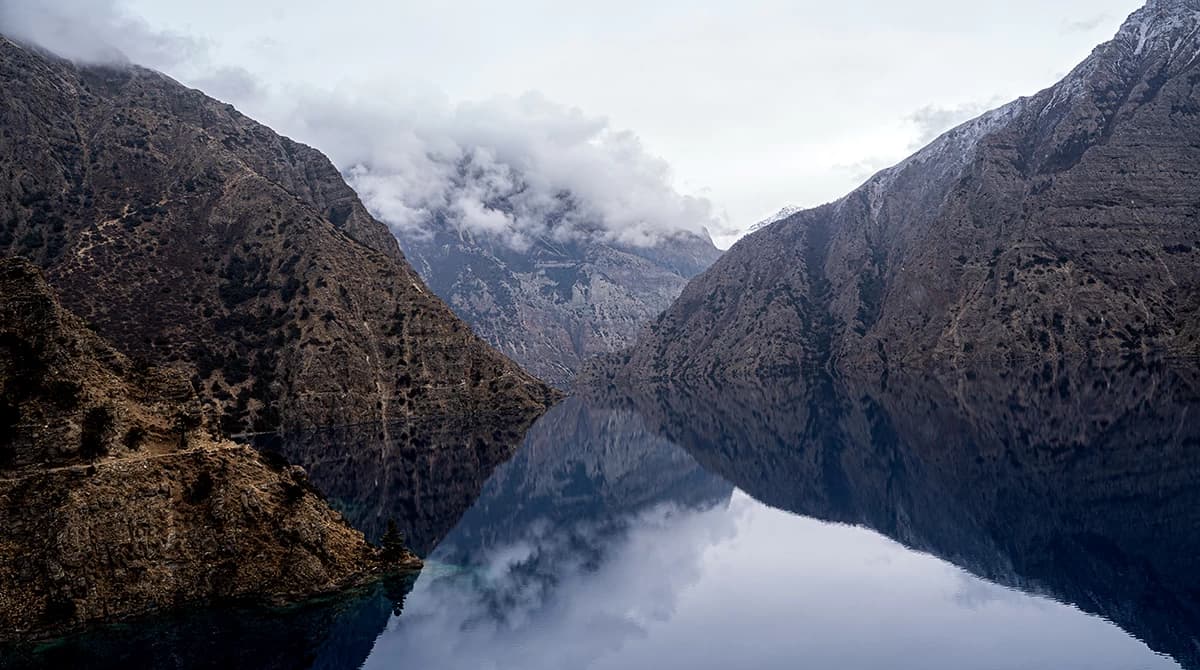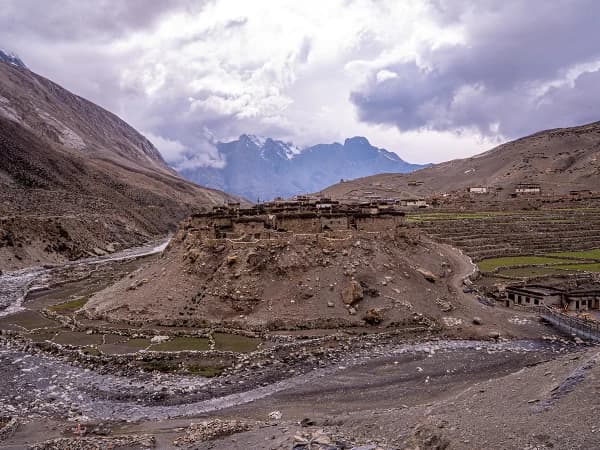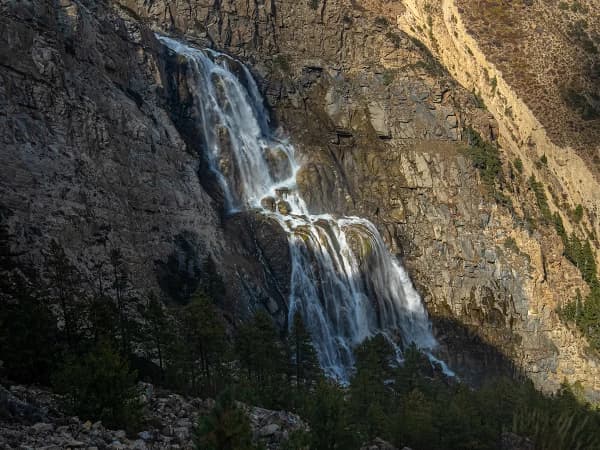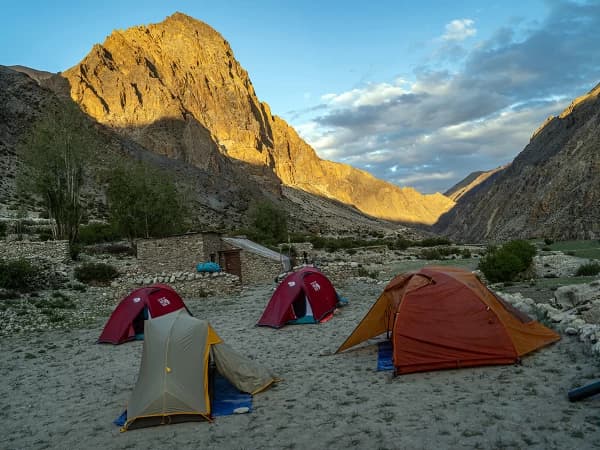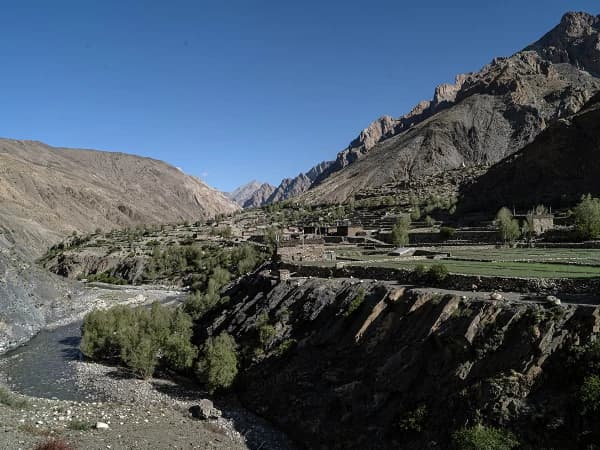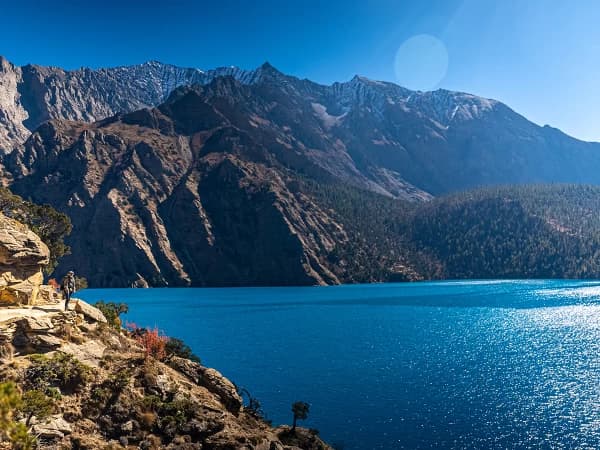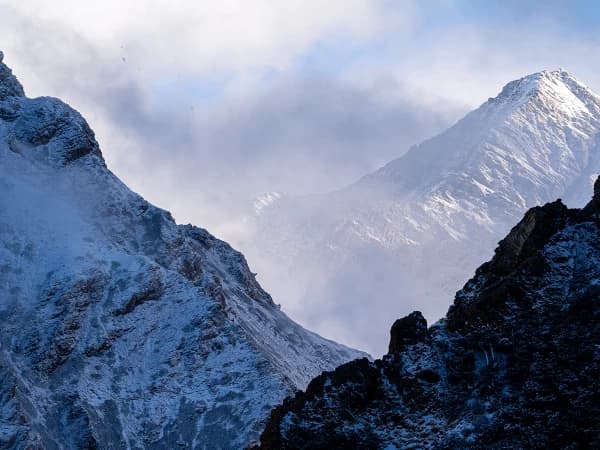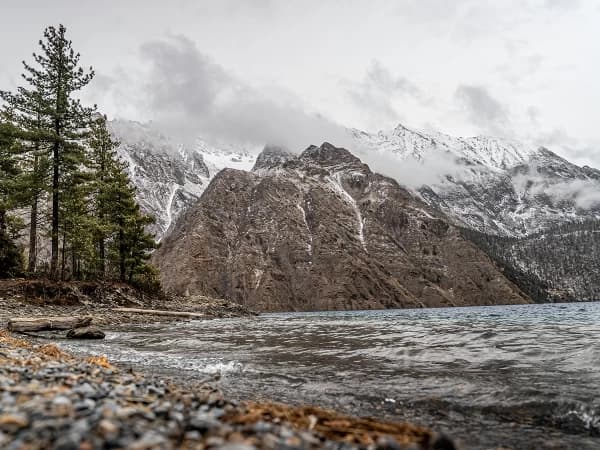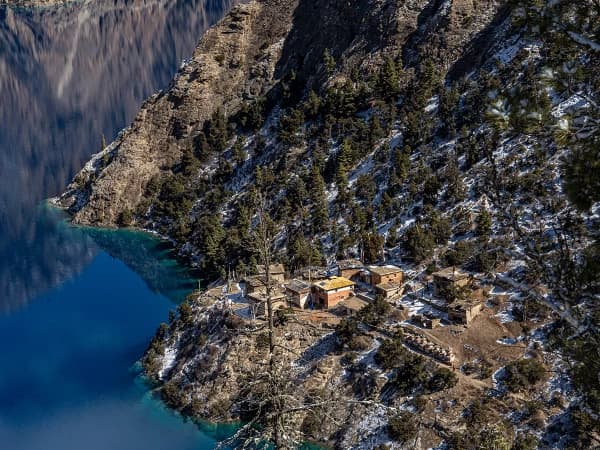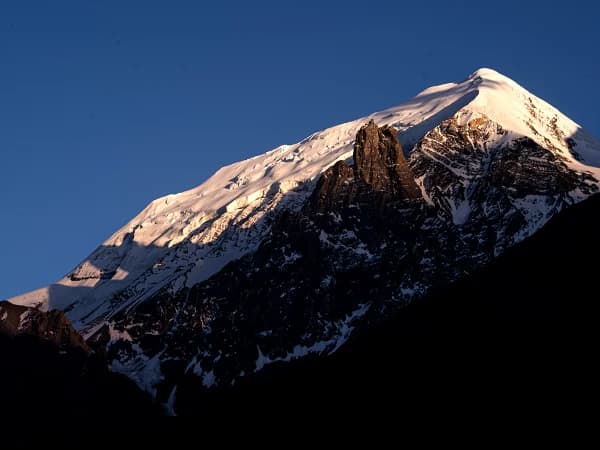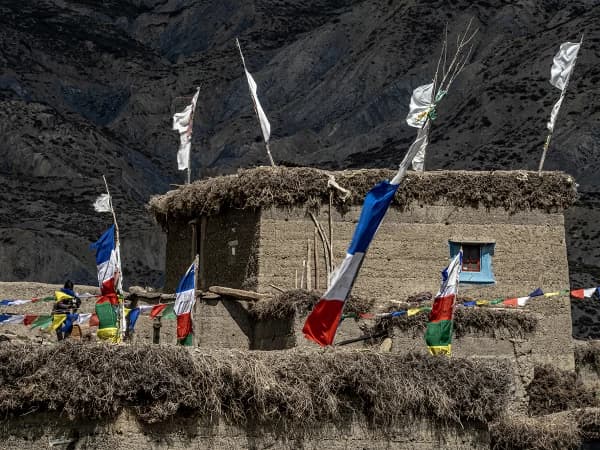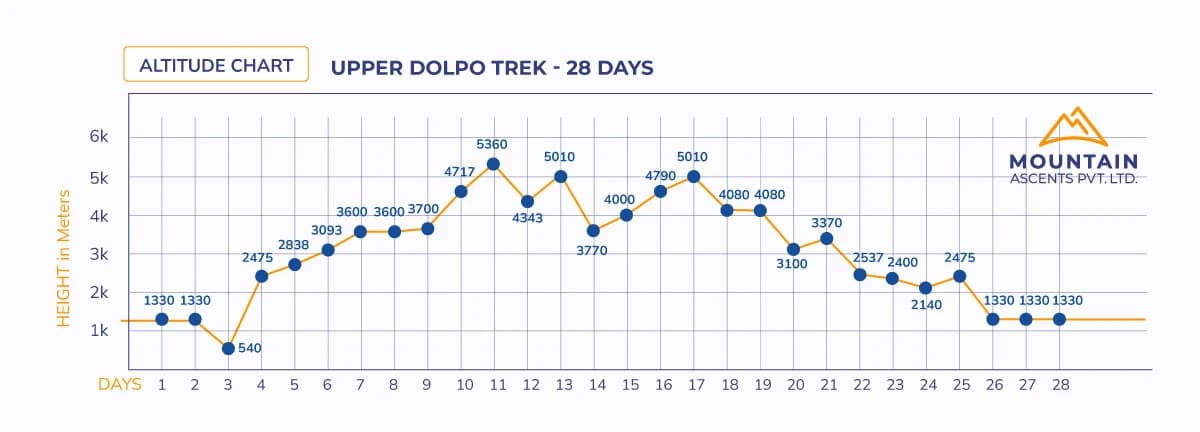The Upper Dolpo Trek is an adventurous trans-Himalayan journey to one of the most spectacular rain shadow regions of Nepal that is least explored, boasting unspoiled culture in the midwestern part of the country. Opened for trekkers only after 1989, the Upper Dolpo Trekking is through highly restricted areas, presenting trekkers with one of the most versatile Himalayan expeditions, abundant in raw wilderness, serene valleys, and the genuine spirit of Bon Buddhism. Lying far from the hazardous cities in remote areas, the trek is named after the largest district of Nepal in terms of area, Dolpo, famous for Tibet-like landscapes and home to rare snow leopards and blue sheep. It also boasts the deepest lake at the highest altitude in the world, Shey-Phokusundo (3,611.5 m/11,849 ft).
Usually, the Upper Dolpo Trek itinerary typically spans 25 to 28 days based on the chosen route, number of acclimatization days included, and side trips included that wind firstly through the lush valleys, arid landscapes, pristine Phoksundo Lake, high passes such as Numa La and Baga La leading to almost desert-like landscapes in stark contrast to the snow-blanketed mountain ranges, all under the Shey Phoksundo National Park, noted as one of the top spiritual landmarks with various ancient Buddhist monasteries like Shey Gompa. The trek route passes through several isolated villages, providing an opportunity to see indigenous people, also referred to as Dolpo-Pa, leading their traditional lives rich in culture and traditions.
For trekkers seeking an exceptionally happening monsoon, longer days, and alternative expeditions in Nepal, the Upper Dolpo Trek comes second to none. Though the cost may vary, the journey is more than mountains; it lets you dive deep into the history and spirituality of Nepal, still renowned as “the last forbidden kingdom,” showcasing the strong influence of Tibetan culture, pre-Buddhism Bon Po, and Chiba culture. To conclude, the trek to Upper Dolpo is an epic escape to the spectacular, off-the-beaten-path trekking trail of Nepal that is a mystery to many, requiring thorough planning, preparation, gear, equipment, appropriate packing, and guidance from local experts like Mountain Ascents (MA). Contact us now to explore the concealed treasures and diversification of Nepal. We ensure a seamless journey to your dream destination, from some of the most popular Himalayan routes to Everest Base Camp (EBC) and Annapurna Base Camp (ABC) to the least trodden hidden trail, like the Upper Dolpo at the most reasonable price.
Trip Highlights
- Visit the UNESCO World Heritage sites of the Kathmandu Valley and its lively Thamel.
- Board an enthralling flight to Nepalgunj and Jupal.
- Trek through the wide array of landscapes, from lush forests to high-altitude deserts, which was once used as a trade route between Nepal and Tibet.
- Admire the untouched natural and cultural beauty of the highly isolated, remote, and restricted region of Nepal.
- An excellent monsoon alternative Himalayan trekking route with a very low precipitation.
- Enjoy incredible side hikes to and from Phoksundo Lake, Shey Gompa, Dha Tarap, and others.
- On your lucky day, get to encounter rare Himalayan fauna like the Himalayan black bear, snow leopard, blue sheep, and so on in the dense rhododendron forest and alpine meadows of the Shey-Phoksundo National Park.
- Conquer the high-altitude Himalayan passes like Numa La (5,190m) and Baga La (5,070m), offering expansive 360-degree views of the surrounding snow-capped peaks such as the Dhaulagiri Range (8,167m), Churen Himal (7,371m), Putha Hiunchuli (7,146m), Kanjiroba Himal (6,883m), Annapurna Massif (8,091m), and numerous Dolpo Peaks visible throughout the trail.
- Get an insight into the extremely hospitable Himalayan locals, their culture, traditions, and way of life guided by Bon Buddhism with a touch of Tibetan culture.
- A journey of a lifetime to test your mental and physical endurance worth an investment offering an unparalleled sense of achievement and real adventure like never before, etc.
What makes the Upper Dolpo Trek special?
Several highlights make the trek to Upper Dolpo stand out, including its cultural, natural, and spiritual importance. Typically beginning with a short yet scenic flight of less than an hour from Kathmandu to Nepalgunj and then Jupal, followed by paving the way through Chhapka, Palam, Sanduwa, Ringmo Gaun, Saldang, and numerous Himalayan settlements, this Himalayan voyage to Upper Dolpo offers a balanced challenge and an adventurous trekking experience in the almighty presence of the Kanjiroba Himal, Annapurna, and Dhaulagiri ranges dominating the skyline.
The direct exposure to the Bon Buddhist culture, pristine scenery of stunning landscapes untouched by mass tourism, the oldest monasteries, followed by blue Phoksundo Lake, and traditional village crafts give you a unique Himalayan trip providing not only a physical test and values of spirituality but also truly pristine nature. Promising you an unforgettable adventure of a lifetime, the trek is ideal for those seeking solitude, raw beauty, and authentic experiences connected to nature. Here are some of the major highlights of the region, which makes the Upper Dolpo Trek a must for adventure lovers and passionate trekkers.
The Shey Pokshundo National Park
The part of the Upper Dolpo Trekking is through the Shey Pokhundo National Park in the Dolpa and Mugu districts of western Nepal. Spread over an area of 3,555 square kilometers, it is the largest and only trans-Himalayan national park of the country that was established in the year 1984 A.D. The park is home to a wide array of flora and fauna, including endangered species like the snow leopard, blue sheep, musk deer, Himalayan tahr, and Tibetan wolf, inhabiting the dense forests of pine, birch, juniper, and various medicinal plants.
The park further features rich biodiversity, including alpine, subalpine, and trans-Himalayan ecosystems, key attractions for nature enthusiasts that you, as a trekker to the Upper Dolpo, can also admire to the fullest. Blending stunningly with the cultural richness and remote wilderness of the trans-Himalayas of Nepal, therefore the Shey Pokhusndo National Park is one of the major highlights of Upper Dolpo Trekking to expect remarkable wildlife observation in serenity.
Striking beauty of turquoise Shey Pokshundo Lake
Located at an altitude of 3,611m above sea level, Phoksundo Lake is the deepest lake in Nepal, 145m, and one of the key features of the Upper Dolpo Trek. Designated as one of the Ramsar sites of the country, the lake is surrounded by rugged cliffs and Himalayan peaks in the contrasting pristine beauty of turquoise waters. The lake is sacred to Buddhists and Bon practitioners and is one of the nation’s most iconic and beautiful high-altitude destinations.
Until now, there has not been any record of marine life due to the lake's mineral-rich composition, believed to cure skin ailments by taking a dip in it, while the pilgrims felt the bath in the lake would free one from human sins and obtain merits. Set amidst the several monasteries and chorten, whether you are a devotee or not, the Shey Pokshundo Lake is a serene and spiritually profound spot, perfect for meditation, mindfulness, self-reflection, and solitude, a must-visit destination for nature lovers and trekkers where you can visit during this Upper Dolpo Trekking with Mountain Ascents.
Spiritually abundant Shey Gompa
Otherwise also referred to as the Crystal Monastery due to its proximity to the base of Crystal Mountain, Shey Gompa is yet another one of the major highlights of the Upper Dolpo Trek, which also carries a massive spiritual significance in the Upper Dolpo region. At an altitude of approximately 4,160 m, it is the spiritual heart of the Upper Dolpo and the Shey Phoksundo National Park, closely linked with Guru Rinpoche (Padmasambhava), one of the Buddhist spiritual leaders who introduced Buddhism in the region. Therefore, the Gompa is specifically treasured by Tibetan Buddhists and Bon practitioners.
Similarly, it also holds the Shey Festival every 12 years, attracting pilgrims and monks across the Himalayas, where visitors are offered a deeper insight into the spiritual and cultural richness of Dolpo. For someone seeking a spiritually cleansing journey, the monastery provides an ideal environment for spiritual practices and tranquility in the center of the dramatic landscapes of the trans-Himalayan region, just the right place for you to meditate and offer prayers during the Upper Dolpo Trek.
Authentic Tibetan Buddhist culture
The Upper Dolpo Trekking route is through several traditional Nepalese villages such as Dunai, Chhapka, Sanduwa, Ringmo Gaun, and others inhabited by people of Tibetan origin keeping close cultural ties to Tibet. Those living in one of the most remote areas are known as Dolpo-pa people, living the typical, simple mountain life that is spiritual, rooted in compassion, wisdom, and pursuit of enlightenment.
As you walk past monasteries and stupas, trekkers can witness monks, nuns, and locals engaged in agriculture and animal husbandry and performing daily rites and rituals. If your time of visit coincides with some of the greatest local festivals, such as the Shey Festival, Lhosar (New Year), and others celebrated with local dance, music, and local delicacies in their cultural attire, it adds much to both cultural and spiritual dimensions to cherish it for a lifetime.
Explore the unspoiled Himalayan Wilderness of the trans-Himalayan region of Nepal
Unlike some of the most popular trekking routes in the Himalayas of Nepal, such as Everest Base Camp, Annapurna Base Camp, Manaslu Circuit, and Upper Mustang Valley Trek, Upper Dolpo sees far fewer trekkers due to its remote and least developed infrastructures in Nepal. As a result, the Upper Dolpo Trekking region stands out for its unspoiled, pristine natural and cultural beauty. Trekking here means being one of the first ones to unveil the hidden beauty of the region away from the crowds, carrying the true essence of raw Himalayan exploration.
Generally, Jupal serves as the trek starting point to Upper Dolpo, which is around 375 km/233 miles west of Kathmandu, the capital city of Nepal. To reach here, trekkers first board a 50-minute domestic flight to Nepalgunj from Kathmandu and then to Jupal from Nepalgunj, which usually spans 35 minutes. The flight is an adventure in itself with epic aerial views of the lush valleys, traditional villages, mountains, and other natural grandeur below.
Once the trek begins, you will embark through arid landscapes, deep gorges, canyons, pristine alpine meadows, and awe-inspiring high mountain passes, offering an otherworldly experience offering a living heritage of spiritual devotion and harmony with nature side by side.
Upper Dolpo Trek 28 Days Itinerary and Cost for 2025 and 2026
The 28 Days Upper Dolpo Trekking Itinerary is a challenging one with a balanced amount of high altitude and rugged terrain in the remote Himalayas of Nepal that takes you back in time as you come across the villages and local lives heavily influenced by Tibetan Buddhism, far away from modern amenities and rapid urbanization. This epic Himalayan odyssey begins with your arrival in Kathmandu, Nepal. After spending 2 days and nights preparing for the trip, you will begin walking from Jupal on the fourth day as you initially fly over to Nepalgunj and then to Jupal.
Jupal Dunai is the destination of the day, where you will spend the night in the local tea house. The next day, the Upper Dolpo Trekking continues and leads you to Chhekpa, Sanduwa, and Ringmo Gaun before ascending to Shey Phoksundo Lake. As you pass through the several tiny settlements and agricultural lands of these villages, you may engage in interactions with locals, see their day-to-day life, and even be part of their customary traditions, offering a unique perspective on life. After spending adequate time exploring and taking in all the serenity that the sacred Shey Phoksundo Lake has to offer, you will head to Forest Camp, where the camping experience begins. For several days you will get to spend nights in a tent camp watching the starry sky, tranquil nature, and lovely meadows and passes through Seula Bhanjyang Base Camp. Shey Gompa, Saldang Sibuk, and Neng la Base Camp are all located near Shey La Base Camp before rejoining the routes with tea houses such as Dho Tarap, Big Cave, Lahini, Tarakot, and Heute Ghar before meeting the trek start point Jupal from Dunai.
In this Upper Dolpo Trek 28-day itinerary, there are several buffer days so you get ample rest and time to explore the area, which is crucial for acclimatization to the high altitude with low oxygen levels, prone to acute mountain sickness (AMS) or altitude sickness. You can anticipate the perfect blend of culture, nature, and spirituality in these areas, including Shey-Phoksundo Lake, Saldang, and Dho Tarap, and in the Kathmandu Valley itself with at least seven UNESCO World Heritage Sites to explore, unwind, and appreciate traditional architecture at.
Nonetheless, this 28-day itinerary for the Upper Dolpo Trek offers a strikingly balanced adventure, cultural immersion, and opportunities for spiritual rejuvenation in a more secure and safe manner, separating several days for acclimatization only; hence, it is considered the best route to trek to the Upper Dolpo Region in Nepal even for 2025 and 2026. Further at Mountain Ascents, we are offering an exclusive discount on the group trip to Upper Dolpo Trek costs. Grab this opportunity now and book your seat today. Or, contact us now and get a tailor-made itinerary as per your needs, preferences, and budget, where our packages are reasonable, covering expenses of all the trek essentials, including accommodation, permits, meals, guides, and transportation.
